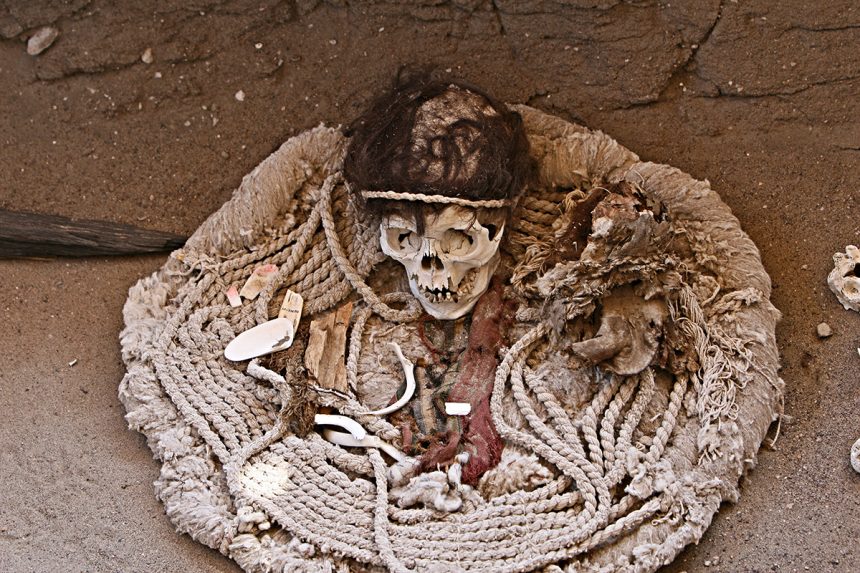A groundbreaking discovery in Peru has unveiled intricate tattoos preserved on 1,200-year-old mummies from the Chancay culture. This pre-Hispanic civilization, which thrived along the coastal regions of modern Peru, left behind an artistic legacy not only in pottery and textiles but also in body art, now brought to light using advanced laser technology.
Rediscovering Ancient Ink
For years, faint tattoo markings on Chancay mummies puzzled researchers, but their true complexity remained hidden—until now.
The Chinese University of Hong Kong employed laser-stimulated fluorescence (LSF) technology to analyze the remains, revealing strikingly detailed tattoos with unprecedented clarity. The high-contrast fluorescence images exposed patterns and symbols unseen by the naked eye.
These tattoos predominantly feature geometric motifs, particularly triangular shapes, along with depictions of animals, suggesting symbolic or ritualistic meanings. Remarkably, the fine-line designs measure just 0.1 to 0.2 millimeters wide, a level of precision that rivals even modern tattooing techniques.
Mastery in Tattooing Techniques
The intricate tattoos suggest that the Chancay people used sophisticated methods to etch ink into the skin, likely employing sharp tools such as cactus needles or animal bones. The extraordinary craftsmanship highlights the skill, patience, and expertise required to create these fine-line tattoos, reinforcing the idea that body art held deep cultural significance.
Among the more than 100 mummies studied, only a select few exhibited these highly detailed tattoos, suggesting that such body markings were reserved for specific individuals. This exclusivity implies that tattooing was linked to status or ceremonial roles within the Chancay society, further emphasizing its importance beyond mere decoration.
Connecting Body Art to Chancay Culture
The Chancay civilization is well known for its finely crafted textiles and ceramics, which were widely traded throughout the region. Interestingly, the geometric patterns found in these art forms closely resemble those seen in the tattoos, though the body art appears even more intricate. This connection suggests that tattooing was a highly esteemed form of artistic expression, possibly denoting social hierarchy or spiritual beliefs.
By merging archaeology with modern imaging techniques, researchers are gaining deeper insights into the artistic sophistication and societal structures of ancient cultures. As further studies investigate the purpose and meaning behind these tattoos, they could transform our understanding of body art in pre-Hispanic societies—revealing it not just as a form of ornamentation, but as a powerful marker of identity, status, and tradition.





